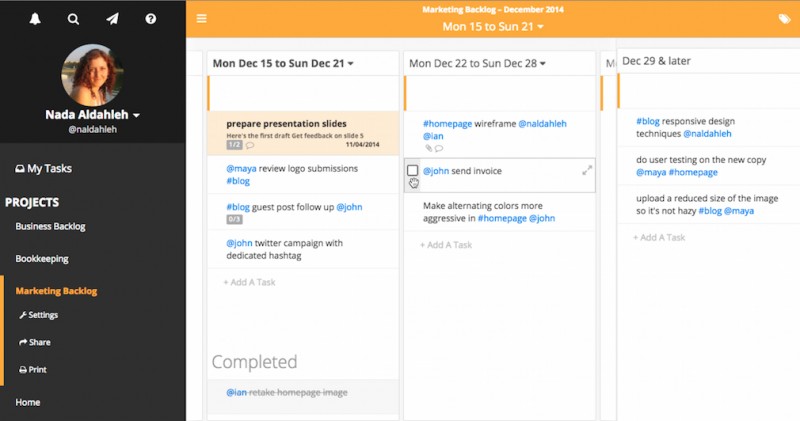Is too much choice in your task list a good thing?
It seems like a simple matter of logic that having more choices is better than having fewer choices. Additional options allow more people to find the something that suits them perfectly, and anyone who doesn’t care about additional choices can simply ignore them. Because this logic seems obvious, the studies contradicting it have attracted a lot of attention. Several studies have showed that adding options actually decreases the likelihood that people will select any of them.
In one study a grocery store conducted two tasting sessions. In one session shoppers were presented with 24 flavors of jam, and in the other session they were presented with 6 flavors. The session with 24 choices of jam attracted 60% of shoppers, while the 6-choice session attracted 40%. In both sessions shoppers sampled two flavors on average. But in the 24-choices session only 3% of shoppers bought jam as opposed to 30% of shoppers in the 6-choice session.
Psychologist Barry Schwartz explains this phenomenon in his book The Paradox of Choice. He argues that when people are faced with many choices, they begin to evaluate their options in terms of missed opportunities. This increases their negative emotions and often leads to a decision-making paralysis.
When it comes to productivity, people benefit from having some choice about what to work on next, but not too much choice. Scanning a long list of tasks in order to decide what to work on next creates a sense of opportunity cost. No matter what you choose you will be left wondering, “Is this the optimal use of my time?” Often, this results in procrastinating, you may find yourself checking your email repeatedly or reading the news instead of working on your highest priority. As a result, it is best to limit your choices to around five tasks a day.
In addition, the more choices you have, the more decision making you need to do. And a long session of decision making leads to decision fatigue . Decision fatigue refers to a real psychological condition in which a person’s productivity suffers as a result of becoming mentally exhausted from making so many decisions. Our cognitive resources are scarce, limited and easily depleted. That’s why many Presidents and CEO’s wear the same thing every day. Eliminating decisions helps us be more efficient at work. Simply put, keeping your task list small will help you save cognitive resources for other work related decisions you may encounter.
Your Task List
Keeping a personal or a team task list is a great way to keep track of your projects; what has been accomplished and what needs to be worked on next. Most task lists offer the ability to add due dates, assignees, notes, subtasks, and attachments to your tasks. Team task lists will also allow you to comment and discuss tasks from the same place. It’s great to have all your information, accessible by all team members in one place!
One common frustration people have with their task list is that it grows longer and longer with time. Eventually, scanning your task list will lead to a decision making paralysis. Too much choice on what to work on next makes it harder for us to focus.
If this is a frustration of yours then you should think of breaking down your long task list into rough milestones or iterations. You can start with weekly milestones, and adjust the milestone length as you see fit for each project.
Using Sandglaz, you can record the tasks directly in the milestone they belong to, so you don’t overwhelm yourself. And as you go, you can always change your mind and drag and drop your tasks from one milestone to another.
A screenshot of Sandglaz. Each column is a milestone with a few task
With this approach the priorities are clearly delineated in each column with a reasonable amount of choice of tasks to work on for each person (as opposed to a bewildering list of tasks in a flat task list, or the complete absence of choice in Calendars and Gantt charts ).
Another benefit of this is that it’s easy to scroll back and forth to see what has been done in each milestone and what is planned. Filtering on an assignee will give you an idea of each person’s workload and accomplishments.
In conclusion when it comes to your task list, giving yourself and your team some choice but not too many is the best way to keep you all productive and focused.
Did you ever suffer from having too much choice? Please share with us in the comments below.
